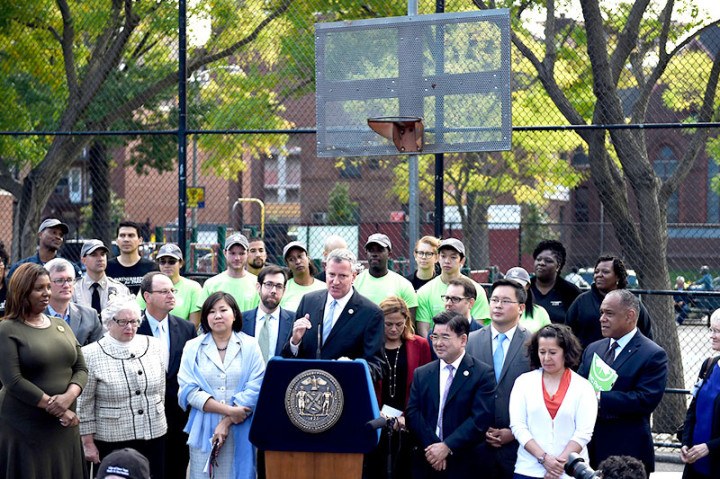
In October, New York City Mayor Bill de Blasio announced a Community Parks Initiative that recognizes the importance ofthe parks beyond Central Park or Prospect Park, where a couple basketball or handball courts serve as community magnets. The first phase of the plan, dubbed NYC Parks: Framework for an Equitable Future, will invest $130 million in capital funds to refurbish existing parks around the city. The plan has come in for criticism that it doesnt go far enough.
Of course, this is not the first time New Yorks municipal government has re-focused attention on neglected public space. In the 1960s, under Mayor Robert F. Wagner, a consortium of concerned civic groups, churches, and government agencies organized the development of small parks citywide. The citys Coordinator of Housing and Development, Milton Mollen, led this effort, which resulted in a series of new vest-pocket parks and play lots in some of the Citys most congested neighborhoods.
CHPC played a role in the special committee on outdoor recreation that met in 1965 and included U.S. Senator Robert F. Kennedy. The committee produced a study that detailed the demand for park space; an inventory of resources; access to land and facilities; and analyses of recreation programs and government-community relations. In Kennedys words, The recommendationsprove very helpful over the long run.
Among the significant correspondence in the CHPC archives is a letter from Senator Kennedy to CHPC executive director Roger Starr, commending Starr for his role on the committee.Those recommendations included:
- That New York City develop a comprehensive outdoor recreation program, notably the formation of an intergovernmental unit to coordinate the planning and fundraising for these small parks.
- The coordination of the federal Interior Department and Housing and Home Finance Agency to offer federal funds and guidance.
- That New York City participates in state programs for recreation. Also, explore establishing state parks within the city.
- That the city government uses these neighborhood parks to support their neighborhoods, mostly in terms of having these parks serve as job creators.
- Legislation from the federal and state governments to provide more grant aid for urban parks.
Please wait while flipbook is loading. For more related info, FAQs and issues please refer to documentation.
